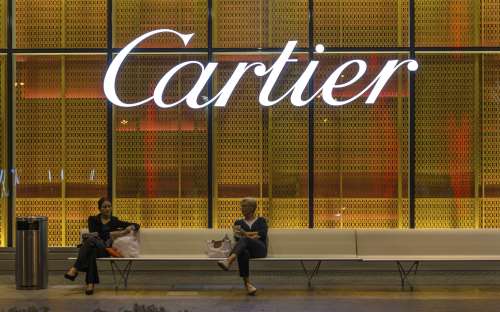The clearest indicator of this shift comes from the largest deal the sector has seen this year — the merger of Richemont owned e-commerce platform Net-a-Porter and Italy’s online fashion retailer Yoox. Yoox’s business model is to sell luxury brands’ overstock items but maintain a feel of exclusivity. It has so far charmed 30 brands to its platform.
The €1.3 billion tie-up illustrates the changing face of luxury. This shift is having a profound impact on the strategies of brands and the careers of luxury managers, who must executive bold new approaches to digital.
Gachoucha Kretz, former LVMH executive and now professor of marketing at HEC Paris, says: “Chances are the breaking new business models like that of Yoox or Moda Operandi will flourish and, of course, drive new career and business opportunities.”
The industry has traditionally shied away from the internet, fearing the web’s access would undermine its exclusive, up-market values.
Discretion and selectiveness have been the sector’s guiding principles. “To preserve desirability and seductive distance, luxury brands wanted to limit access,” says Gachoucha.
But several factors have combined to indicate the industry is in need of rapid change. Brands are noticing that the internet has changed the buying habits of the wealthy; digital-savvy millennials are using social media to track prices; advertising revenue is falling at fashion magazines; the unstoppable rise in the popularity of smart devices.
French bank Exane BNP Paribas forecasts that by 2020, online luxury sales will be two to three times current levels of about 6%. When including digitally driven in-store sales — when consumers have used the internet to research before visiting a store — digital could account for 50% of sales.
Erica Corbellini, director of the Master in Fashion, Experience and Design Management at SDA Bocconi School of Management, says luxury brands are desperate for talent to combine technological expertise with business knowledge and an eye for visual detail.
“There are now several luxury brands that have developed a successful digital strategy — proving that it is possible to create omni-channel engagement while staying true to their DNA,” she says, such as Burberry, Gucci and Chanel.
But luxury brands face an uphill struggle in the search for executive talent. Angelo Manaresi, director of the MBA in Design, Fashion and Luxury Goods at Bologna Business School, points to a historical conflict between luxury managers and creative visionaries.
“In many companies the two groups of people fight with each other to impose a point of view that is too extreme,” he says.
Opinion is also still divided over how to adapt to a mercurial consumer environment in which digital is becoming king. Brands have adopted different strategies. For example Kering, the French luxury group that owns Gucci, Bottega Veneta and Saint Laurent, launched a venture with Yoox to market its brands online.
Yet others such as Prada and Louis Vuitton have opened contemporary art collections in cultural capitals like Venice, Paris and Milan, in a bid to strengthen brand value. Prada has also converted concessions in department chains into directly operated stores.
Ivan Coste-Manière, professor of marketing at SKEMA Business School, says: “Some brands are still reluctant to fully adopt the web, while some others, and especially the newest and youngest ones, have been using the web with tremendous success in terms of leverage for both the brand image and cash flow.”
Nowhere is adoption of the web more important than in the matter of pricing. The internet has shined a light on the disparities between prices of the same item in one country to another.
Chanel, for example, drew criticism this year when it increased the price of some of its handbags — costing up to $4,900 — in Europe while slashing prices in China. The strategy was aimed at closing a European price gap caused by the weakening euro. At one point the same bag could sell for 70% more in China than in Paris.
Professor Thomaï Serdari, strategist in luxury marketing and branding at NYU Stern School of Business, says that luxury groups are not willing to compete on price because they have higher cost bases.
“Luxury brands face a different challenge — how to optimize their omni-channel strategies to educate the customer about features and experiences, rather than price alone,” she says.
Research from the Premium and Prestige Business Observatory at IE Business School found 75% of luxury clients look online to make their decision of purchase. “The internet is today an unavoidable part of decision making for luxury clients,” says Professor Maria Eugenia Giron, executive director of the Observatory.
Yet in an increasingly globalized luxury industry, the web and social media have highlighted the vulnerability of brands, which can be exposed on pricing strategies in a click.
“Consumers are savvy,” says Gachoucha at HEC Paris. “If they know one option can be more affordable somewhere else, then it damages price perception.”
Professor Simon Nyeck, academic director of the MBA in International Luxury Brand Management at ESSEC Business School, says luxury brands widely use the internet as a tool for communication and promotion, but a challenge is to adapt strategies for new smart devices.
Luxury leaders also face the challenge of replicating an experience that is similar to in-store shopping to their online channels. Managers must be fluent in the brand’s DNA to know how to express it across all sales points.
SKEMA’s Ivan calls this “an Everest”. “In-store experience cannot be replicated. But that type of experience can be extended to the type of packaging you receive, the delivery method, the expediency of delivery, or the hand-written note that accompanies your parcel,” says NYU Stern’s Thomaï.
The challenge is made more difficult because of the cultural barriers brands encounter when dealing with international customers, experts say.
Current trends have put under scrutiny the millions of euros spent by European luxury groups on store expansion in Asia over the past five years, as brands raced to open in emerging markets, and the geopolitical tensions weighing on Russia’s economy dented European luxury sales.
However, career opportunities may still be strongest in Asia. Chris Higgins, assistant director at the Career Development Centre of INSEAD, says: “Europe has been a mature market but we’re receiving more growth in areas like greater China, in the BRICs.”
But with currency fluctuations, the rise of internet shoppers and a slowdown in Chinese luxury tourism, there is much to suggest brands must adapt to the digital age.
“The internet must be considered a strategic tool, a CEO’s weapon, and not only a communication medium,” says SKEMA’s Ivan.
RECAPTHA :
12
ec
82
35








